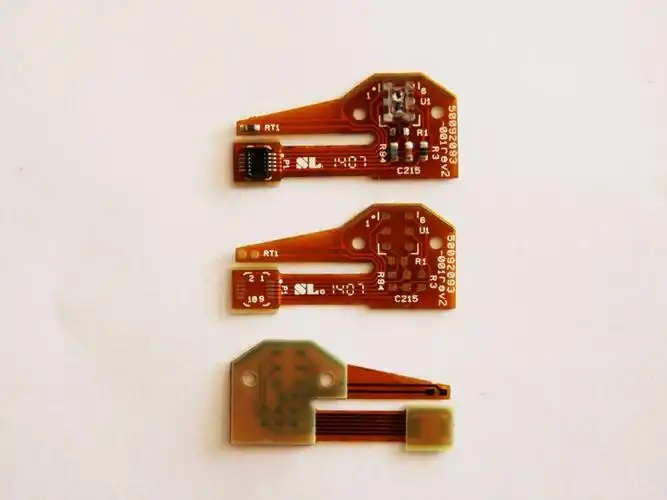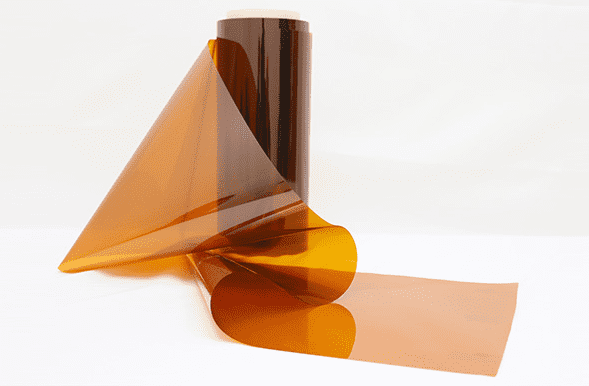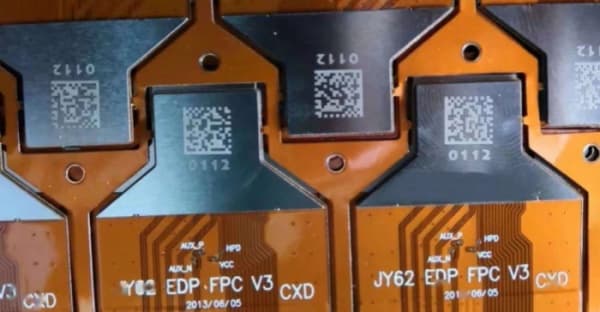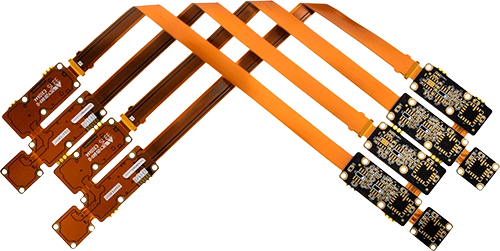Flex PCB Stiffeners: Materials, Process, and Key Differences
 18 Jun 2025 14:31:23 GMT
PCBASAIL
18 Jun 2025 14:31:23 GMT
PCBASAIL
Flexible printed circuits (FPCs) are made using polyester film or polyimide. They’re super
light, crazy thin, and pack a lot of flexibility in a small package, which gives them perks
that other circuit boards just can’t match. Compared to traditional interconnect methods,
FPCs can bend and flex millions of times without failing, they’re easy to install, and they
even do a pretty good job of dissipating heat.

But because FPCs are so thin and lightweight, they can also be prone to damage during handling. You might see dents, creases, or scratches, and they don’t have a ton of mechanical strength on their own, so cracking can be an issue. That’s why we add stiffeners — to reinforce the flexible board and beef up the mechanical strength, making it easier to mount components on the board without worrying about damage. There’s a whole toolkit of stiffener films out there: PET, PI, self-adhesive films, metal plates, resin boards, and more. Which one you pick really depends on your design specs and how the final product will be used.
Three Go-To Stiffener Materials
Polyimide (PI)
PI is a specialty engineering material you’ll find everywhere from aerospace to microelectronics, and even in laser and nanotech applications. It’s flame-retardant, handles both extreme heat and cold like a champ, and can be used continuously in temperatures ranging from −200°C to 426°C.
In FPC manufacturing, PI shows up as a protective film for insulation and as a stiffener sheet. The protective film keeps circuits insulated, while the PI stiffener typically goes behind the gold fingers (those edge connectors) for extra support. Depending on your design and operating environment, you choose different thicknesses of PI and press them onto the board under heat and pressure.

FR-4
FR-4 is naturally flame-resistant and beats paper-based laminates in mechanical strength, dimensional stability, impact resistance, and moisture tolerance. It also has great electrical properties and handles high temperatures better than most.
In the FPC world, FR-4 is used purely as a stiffener behind soldering areas — it’s not as abrasion-resistant as PI, so you typically don’t use it for gold fingers. Instead, it’s all about supporting the solder zones, preventing failures when your flexible board is repeatedly bent.

Stainless Steel (303-grade)
303 stainless steel is an austenitic, free-machining grade with sulfur and selenium added for excellent cuttability and a smooth finish. When FPCs require top-tier stability, a 303 stainless steel sheet is your friend.
Steel stiffeners are etched into shape (you can’t CNC drill or laser-cut them on an FPC machine), so they cost a bit more, but the payoff is rock-solid rigidity wherever you need it.

Overview of the FPC Stiffening Process
1. Main FPC Production Flow with Stiffening
Raw Material Preparation: Unroll copper foil, protective film, stiffener material, and PSA (pressure-sensitive adhesive).
Drilling: Drill holes through copper foil, protection layers, stiffener, and adhesive.
Via Formation: Create blind or through-hole vias (PTH).
Dry Film Lamination: Apply dry film resist, align film with the circuit pattern, expose to UV, develop, then plate copper.
Etching & Cleaning: Remove dry film, chemically clean, then repeat resist application, exposure, development, and etching. Brush and clean off resist.
Lamination: Apply protective films, then stack and laminate core layers.
Stiffener Application: Align and press the stiffener film (PET, PI, FR-4, or steel) onto the board using heat or pressure.
Punching & Marking: Punch out plated holes, emboss markings, bake the board to cure adhesives, apply surface finish, stick on PSA for mountability, separate individual boards, punch lead-out holes, and conduct electrical tests.
Final Cutting & Inspection: Cut the outline, perform full quality control (FQC) and outgoing quality control (OQC), then package and ship.
2. Stiffener Attachment Methods
Thermal-Cure Adhesives: Heat melts the adhesive in the stiffener, bonding it permanently to the FPC.
Pressure-Sensitive Adhesives (PSA): No heat required; peel-and-stick to mount the stiffener.
3. Stiffener Lamination Techniques
Hot Lamination: Use heat and pressure (or vacuum) to cure the adhesive in the stiffener, ensuring a tight bond.
Cold Lamination: For PSAs, simply use a cold press machine to attach stiffeners without heating.
4. Post-Lamination Curing (Aging)
For thermal-cure stiffeners, a post-lamination bake step at elevated temperatures for an extended period completes the adhesive’s curing, boosting bond strength between the stiffener and FPC.
5. Equipment You’ll Find in an FPC Facility
Refrigerator Cabinet: Stores temperature-sensitive adhesive films at 1–9°C (shelf life of 3 months).
Pre-Lamination Machine: Precisely positions and applies thermal-cure stiffener films.
Manual Fixture: Aligns and attaches PSA films.
Vacuum Press: Ensures uniform pressure during hot lamination.
80-Ton Press: Required for thicker PI films, delivering enough force to bond stiffeners.
Cold Press: Attaches PSAs without heat.
Oven: Bakes boards post-lamination to fully cure adhesives.
6. Jigs and Fixtures
Pre-Lam Fixture: Holds boards in place for precise stiffener alignment.
Alignment Pins: Guarantee correct positioning during lamination.
7. Stiffener Film Components
Stiffener Film: Masses of mechanical strength added to FPCs (commonly 5mil or 9mil).
Adhesive Layer: Thermal or pressure-sensitive, selected per customer specs.
Release Paper: Prevents contaminants from sticking to adhesive before use.
Storage Guidelines: Keep adhesive films refrigerated (1–9°C), use within 3 months; once out, don’t leave at room temperature more than 8 hours.
Stiffened FPC vs. Rigid-Flex PCB
Structural Differences
FPC with Stiffener: A flexible board is reinforced in specific regions with rigid materials (FR-4, aluminum, or stainless steel) to boost mechanical strength. The rest stays flexible.
Rigid-Flex PCB: A hybrid board combining true flexible circuits and rigid PCB sections, joined by plated holes and adhesive layers, offering both flexibility and solid support.
Functional Differences
Stiffened FPC: Primarily protects high-stress areas (connectors, mounting points) from bending or stretching damage. Ideal for zones that need occasional rigidity but don’t require a full rigid section.
Rigid-Flex PCB: Leverages both worlds: the rigid section provides mechanical backbone while the flexible portion allows complex three-dimensional routing. Perfect for high-reliability, space-constrained applications.
Typical Applications
Stiffened FPC: Used in any area that sees frequent plug-and-play action or mechanical stress, such as connector interfaces or hinge points.
Rigid-Flex PCB: Found in smartphones, wearables, medical devices, and aerospace gear where ultra-compact, reliable wiring is a must.
By understanding these materials, processes, and equipment, you’ll be ready to pick just the
right stiffener, nail your lamination steps, and ensure your FPC assemblies perform
flawlessly in their real-world applications.
